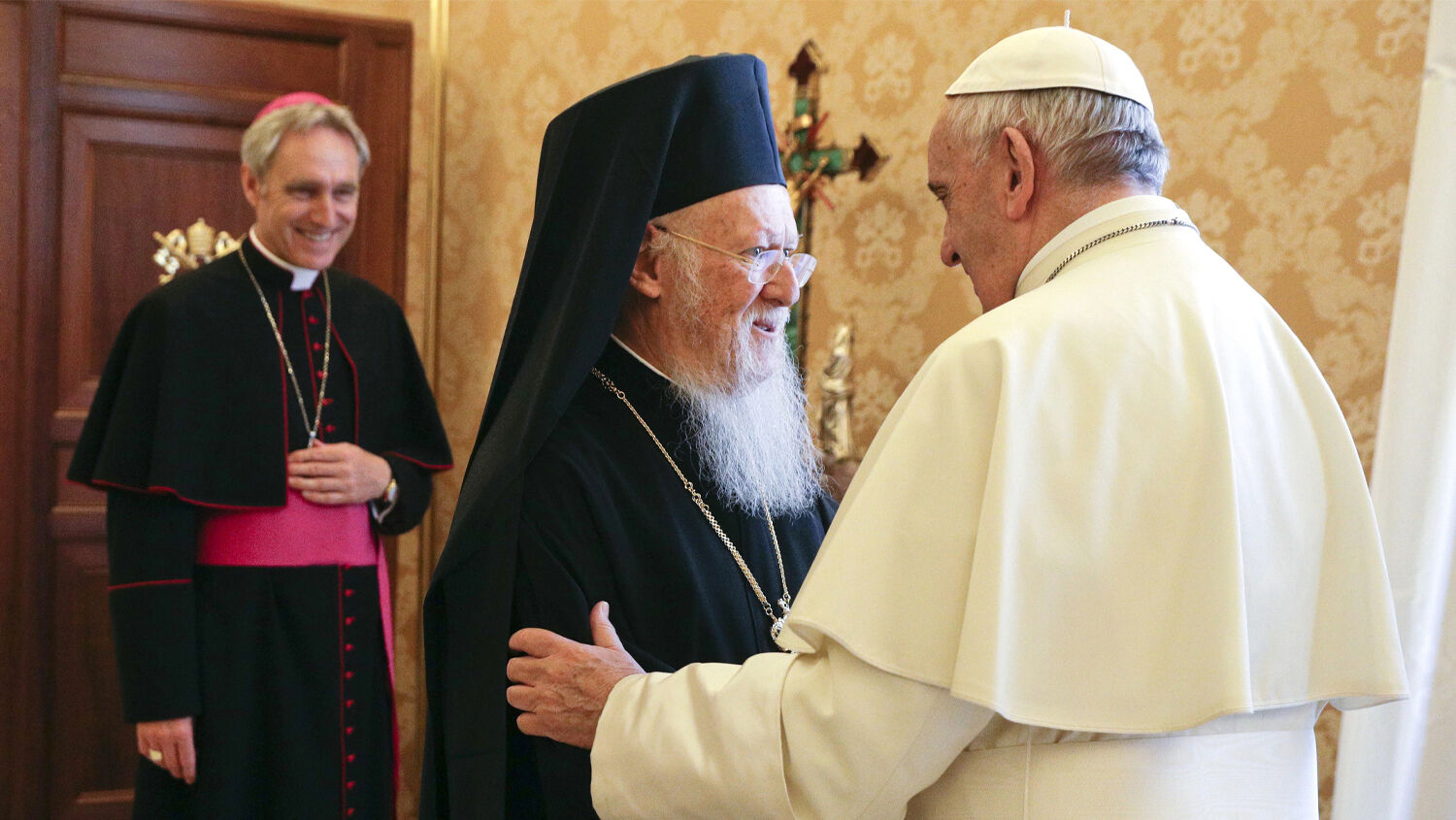
Orthodox and Catholics May Soon Celebrate Easter on Same Day
After centuries of division, the Eastern Orthodox and Roman Catholic Churches may soon be celebrating Easter on the same day. In an interview with Turkish media, Ecumenical Patriarch Bartholomew said that Orthodox and Catholic representatives are working on an agreement concerning a common celebration date for the resurrection of Jesus Christ. Both churches hope an understanding can be reached by 2025, which marks the 1,700th anniversary of the Council of Nicaea.
“Our objective is that in this context of the anniversary, we can find a solution in regard to Easter,” Bartholomew said on November 16. “The pope has the best intentions, and I think the moment has arrived, both for the Orthodox Church as well as the Catholic, to fix a common date to celebrate Christ’s resurrection. I hope that on this occasion, we will be able to come to an agreement.”
Division over Easter is not new; it goes back all the way to the first century after Christ’s crucifixion. The Apostle Paul did not celebrate the day of Christ’s resurrection but rather commemorated the day of his death on Passover (1 Corinthians 5:7; Hebrews 11:28). But after the apostles died, a teacher named Ignatius began preaching against Judaizers who kept the Sabbath. He taught that Christians should meet on Sunday, and soon many Christians were celebrating “Resurrection Sunday,” even though there is abundant scriptural proof that the resurrection did not take place on Sunday. (You can prove this by requesting a free copy of our reprint article “When Was Christ Crucified and Resurrected?”)
The division between those who kept Passover and those who kept Resurrection Sunday grew so intense that Pope Victor threatened Polycrates of Ephesus with excommunication if they did not abandon the practice of keeping Passover on the 14th day of the Jewish month of Nisan (which occurs the day prior to the first or second full moon after the spring equinox, depending on how the Jewish leap year falls). Pope Victor did not go through with the excommunication after some of his bishops, such as Irenaeus of Lyons, protested. But about 130 years later, the Council of Nicaea decreed that Easter should be observed on the first Sunday following the full moon after the spring equinox.
Any Christians who wanted to observe Passover on the same day as the apostles had to go into hiding while the Catholic Church enforced Resurrection Sunday (later rebranded Easter after the Anglo-Saxon fertility goddess Ēostre). But this was not the end of the divisions. After the Catholic Church adopted the Gregorian calendar in 1582, another disagreement sprung up over the spring equinox.
The ruling at Nicaea stated that Easter should be observed on the first Sunday following the full moon after the spring equinox. But neither the Orthodox nor the Catholic Church calculates the equinox astronomically. They say the ecclesiastical equinox is March 21, and Easter is the first Sunday following the full moon after March 21. So, when the Catholic Church adopted the Gregorian Calendar, they started keeping Easter on a different day than the Orthodox Church, which uses the Julian calendar.
Patriarch Bartholomew believes that the Orthodox and Catholic Churches should be able to agree when the spring equinox occurs before the 1,700th anniversary of the Council of Nicaea by consulting astronomical experts, but neither church plans on observing the biblical Passover on the 14th day of the Jewish month of Nisan like Jesus Christ, the original apostles and the early church did. (To learn why you should follow the example of Jesus Christ and the original apostles by keeping Passover, request a free copy of our booklet Pagan Holidays—or God’s Holy Days—Which?)
For over 40 years, the late Plain Truth editor in chief Herbert W. Armstrong forecast that the Catholic Church would pull its Protestant daughters and Orthodox sisters back under its dominion. “The mighty problem of achieving [Catholic] unity is twofold,” his magazine stated in 1963. “First, it involves reconciliation of the Orthodox Schism that officially commenced in 1054 and divided the churches in the East—Greece, Russia, the Balkans, and the Near East—from Rome. Second, it involves the restoration to the Roman Communion all Protestantism, which developed from 1517 onward.”
This prediction was based on Isaiah 47, which describes a church called “the lady of kingdoms” that has power over many nations. Yet this church has protesting churches that have split away from it. Isaiah states that these protesting daughters will be brought back under their mother’s control.
The Catholic Church has signed agreements with Orthodox, Lutherans, Methodists, Anglicans, and other religious groups in its push to unify the world—and especially Europe—under its control. But all of these agreements would pale in significance to an agreement establishing a common celebration date for the resurrection of Jesus Christ. Such an agreement would unify Sunday-keeping churches against Judaizers in a way they have not been united in well over a millennium.
Bible passages like Isaiah 47 indicate this will happen.
For more information on how the Roman Catholic Church is working to unite all Christians under the pope, read Who or What Is the Prophetic Beast?, by Herbert W. Armstrong.
